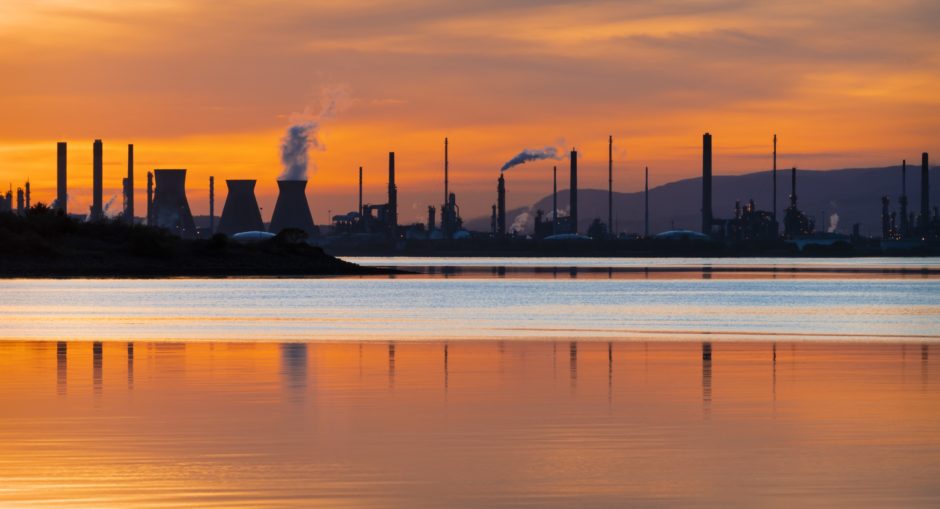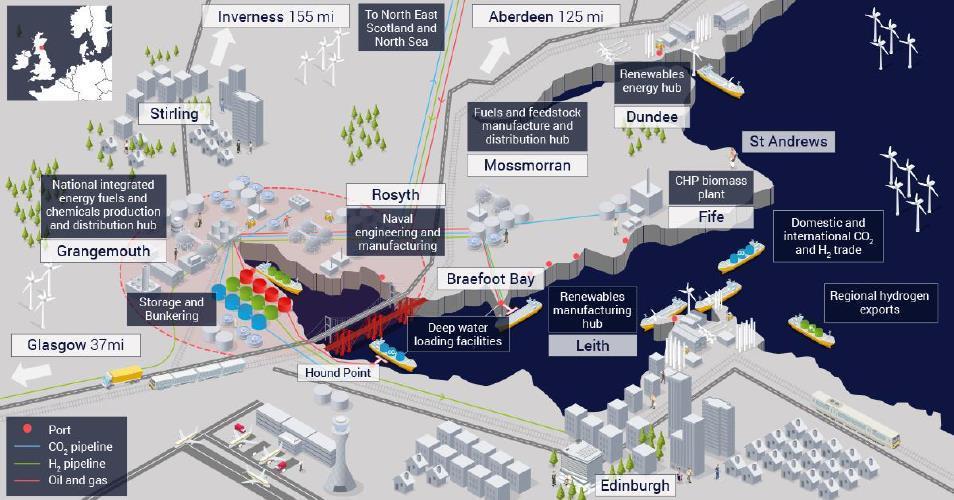
The development of a “net-zero hub” on the Firth of Forth is key to achieving Scotland’s climate change goals, according to global natural resources consultancy Wood Mackenzie.
Malcolm Forbes-Cable, vice president of consulting at WoodMac, said the area showcased the challenges Scotland faces to decarbonise, but also the opportunities that will emerge in a low-carbon economy.
The Firth of Forth area is the country’s major industrial cluster and is critical to the economy, Mr Forbes-Cable said.
And while the region is responsible for more than 10% of Scotland’s emissions, it hosts the skills necessary to address the technical and commercial challenges faced in delivering net zero by 2045.
Mr Forbes-Cable said: “For core industries that are vital to the economy, the UK must resolve how to cut emissions and mitigate the remainder.
“It is a tough line to walk, but success will reinvigorate the industrial base securing jobs and the foundations of the national economy.”
He said creating a Firth of Forth Net Zero Hub would meet the challenge head on.
It is an economically important industrial cluster that needs to tackle its emissions, but can become an “important agent” in the national energy transition and delivery of net zero, Mr Forbes-Cable said.
A number of net-zero hubs are being developed around major industrial clusters in the UK, including Net Zero Teesside, Zero Carbon Humber and HyNet North West.
In the north-east of Scotland, partners Storegga, Shell and Harbour Energy are working on the Acorn project, which seeks to develop CCUS and hydrogen capacity at the St Fergus gas terminal.
In July, petrochemicals giant Ineos and Petroineos agreed to work with the partners to develop Scotland’s first carbon capture plant, with a view to transporting emissions from Grangemouth to Acorn, which would store CO2 in depleted North Sea fields.
Mr Forbes-Cable said WoodMac viewed Acorn as “part of the overall solution” rather than as a competitor to a Firth of Forth hub.
Indeed, WoodMac said it would be wrong for the various UK hubs to compete against one another and that “a national effort” to deliver net zero is required.
Westminster has set an ambitious target of 10 million tonnes of installed CCS capacity by 2030.
The UK’s low-carbon hydrogen production is in early development, but together with renewables and CCUS, is a key pillar of the future energy system, WoodMac said on the day the UK Government published its long-awaited hydrogen strategy.
The Edinburgh-headquartered consultancy said the UK needed a coordinated industrial policy and a clear strategy incorporating:
· sustained investment in new technologies, national infrastructure and industrial hubs;
· a regulatory environment fit for an integrated energy system;
· and fiscal and industrial policies that create the markets to allow the low carbon economy to flourish.
Mr Forbes-Cable also said Scotland as a whole had a critical role to play in supporting the UK’s drive to net zero by 2050.
He highlighted the country’s “vast offshore renewable resource potential” and said its oil and gas legacy had created “deep offshore engineering and subsurface expertise and extensive oil and gas infrastructure”.
Forth Ports, owner of a number of the ports on the Forth Estuary, welcomed Mr Forbes-Cable’s comments and the accompanying WoodMac’s paper, which makes the case for a Firth of Forth Net Zero Hub.
Last month Fort Ports said it would submit a “green port” bid to the Scottish Government.
It said the proposals would encompass key ports, industrial complexes and logistics centres along the north and south shores of the Firth of Forth, including Grangemouth and Port of Leith.
Charles Hammond, chief executive at Forth Ports, said: “Our vision is to create a Greenport ‘Hub’ and ‘Green Growth Corridor’ at the heart of Scotland that delivers a just and practical energy transition to meet the UK and Scottish governments’ net zero and energy transition targets.
“We want our ports in the Forth Estuary to assist Scotland in achieving its carbon reduction targets by supporting offshore wind development and working with industry and stakeholders to deliver new, low carbon fuels and technologies, such as hydrogen and carbon capture.”

 © Supplied by Wood Mackenzie
© Supplied by Wood Mackenzie